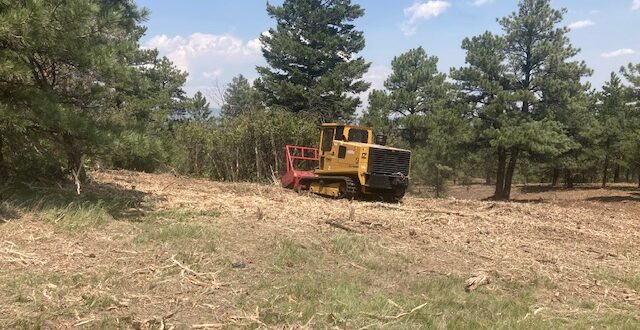Fire Mitigation, Manutou Springs
For fire mitigation in zone 1 and 2 on your property in Manitou Springs, give Colorado Mastication a call (719)400-9104.
After you’ve done your fire mitigation work in Zone 1, it’s time to focus on Zone 2. You can also work on the inner parts of Zone 3. This is all part of Phase 2 of fire mitigation.
This phase will also include some follow-up work in the first zone of land. However, the main focus is on the area 30 to 200 ft from your home.
Thinning the Forest
The first part of this phase is thinning the forests. You’ll need to create breaks in the canopy, and you’ll want to remove the trees that are more likely to create ladder fuel. This doesn’t mean cutting down every other tree or so. You’ll need to pick the right trees.
Look out for the trees that have the biggest canopies. You’ll want to consider removing them to create more light for the ground while creating space between the tree canopies to prevent canopy fires. Then look out for the trees that are too drought-stressed to survive or the newer trees that haven’t received enough light to thrive.
This whole process will take years. Every three years or so, you’ll want to look at the zones again to see if you’ve done enough.
Remove the Limbs from Trees
Next up is the removal of some of the limbs. You’ll need to get in with your pruning sheers and saws. You don’t need to remove everything, but the aim is to prevent ladder fuel.
Get I of the branches that are close to the ground. Douglas firs and Rocky Mountain junipers are the worst for thin branches that touch the ground. All they do is encourage fire to move up the trees to the canopies. Larger trees should be limbed to around 10ft high, while smaller trees should be limbed to around 6ft high in Zone 2. In Zone 3, you can limb to 6ft and 3ft respectively.
When you plant new Douglas firs, make sure you have a wire cage around the trunk to start. Deer will use the trunks to rub against, damaging them. After about 10 years, you can remove the cage to allow the trees to grow well.
A pole saw is great to start. This will get the limbs to close enough to the trunk. Then move onto the pruning saw to handle the rest.
Clear Away the Duff
Ground fires can still kill trees. At first, they look healthy, and then in a few months they die off. This is usually due to the collection of duff, especially around conifers. Cuff is a collection of dead needles and cones, which can grow to a few inches or a few feet thick! The duff will damage the cambium due to high temperatures in a fire.
Make sure this is completely removed from the base of the tree. You want it to sit at least 12in away from the base, and a Pulaski tool is great for doing this. The hoe end will move the duff and the ax part will allow you to cut off any limbs you find hiding underneath.
Then you’ll want to rake away the dead leaves and needles. While this isn’t done as frequently as in Zone 1, you still want to do it in Zone 2 to prevent fuel for ground fires.
For fire mitigation questions in zone 1 and 2 you can reach us by emial, text or phone.

